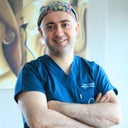I know it's really rare, but how rare is it to have an RFO after a primary breast augmentation?
Answers (5)
From board-certified doctors and trusted medical professionals
Dr. Donovan Rosas, MD

Dr. Donovan Rosas, MD
Board Certified Plastic Surgeon
Answer
Dr. Ted Eisenberg, DO, FACOS, FAACS

Dr. Ted Eisenberg, DO, FACOS, FAACS
Board Certified Plastic Surgeon
Answer
Dr. Camille Cash, MD
Dr. Camille Cash, MD
Board Certified Plastic Surgeon
Answer
Dr. Connie Hiers, MD, FACS
Dr. Connie Hiers, MD, FACS
Board Certified Plastic Surgeon
Answer
More Breast Augmentation Questions
See all Breast Augmentation Q&AWE SEND PRETTY
EMAILS
What’s trending? Who’s turning heads? Which TikTok myths need busting? We’ve got you. No fluff, no gatekeeping—just real talk. Get our free, unfiltered newsletter.
